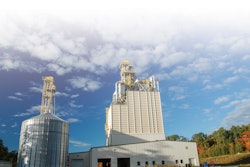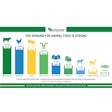
After more than a year of talks, the United States, Canada and Mexico have struck a new trade deal to replace the North American Free Trade Agreement (NAFTA), known as the United States-Mexico-Canada Agreement, or USMCA. Not much different than NAFTA, the new agreement includes major changes on cars and new policies on labor and environmental standards, intellectual property protections, and some digital trade provisions. While signed by the three countries’ leaders in November, the USMCA still needs to be ratified by all three countries’ legislatures before it can take effect.
As far as the grain industry, the USMCA would bring about several significant advancements in facilitating the trade of grains, oilseeds and their derived products in the North American marketplace, said National Grain and Feed Association (NGFA) President and CEO Randy Gordon.
Gordon testified before the U.S. International Trade Commission in November on behalf of NGFA and the North American Export Grain Association (NAEGA).
“The NGFA and NAEGA are pleased USMCA maintains and expands current agricultural market access and preserves the dispute-settlement process for antidumping and countervailing duty cases, while modernizing the agreement to address the challenges of 21st century global trade,” Gordon said.
He highlighted several provisions that will benefit the future competitiveness and economic growth of the U.S. grain, feed and oilseed sectors.
The new agreement preserves and expands on current agricultural market access; maintains dispute-settlement process for antidumping and countervailing duty cases; and makes significant improvements to reduce non-tariff trade barriers.
“USMCA will help facilitate cross-border trade flows by addressing significant non-tariff trade barriers through higher levels of regulatory coherence and cooperation, the implementation of timelines and notifications for adverse import checks, the inclusion of steps to reduce the likelihood of trade disruptions involving products derived from agricultural biotechnology, the use of technical consultations to resolve sanitary and phytosanitary (SPS) issues, and by requiring that SPS standards be grounded in science, based upon appropriate risk assessments and implemented using accepted risk-management procedures,” Gordon said.
As for shortcomings, NGFA and NAEGA said they are disappointed USMCA does not provide access to investor-state dispute-settlement procedures that can be used in the event a party provides less favorable treatment for foreign versus domestic investors.
While the USMCA preserves these protections for some industries, including oil and gas, power generation, telecom, transportation and infrastructure, U.S. companies investing in food and agriculture would be denied such protection beginning three years after NAFTA’s termination.
Overall, Gordon said, NGFA and NAEGA believe USMCA represents a “significant advancement in facilitating the trade of grains and oilseeds and their derived products within North America, and in many respects can serve as a model for future state-of-the-art trade agreements.” ■


















